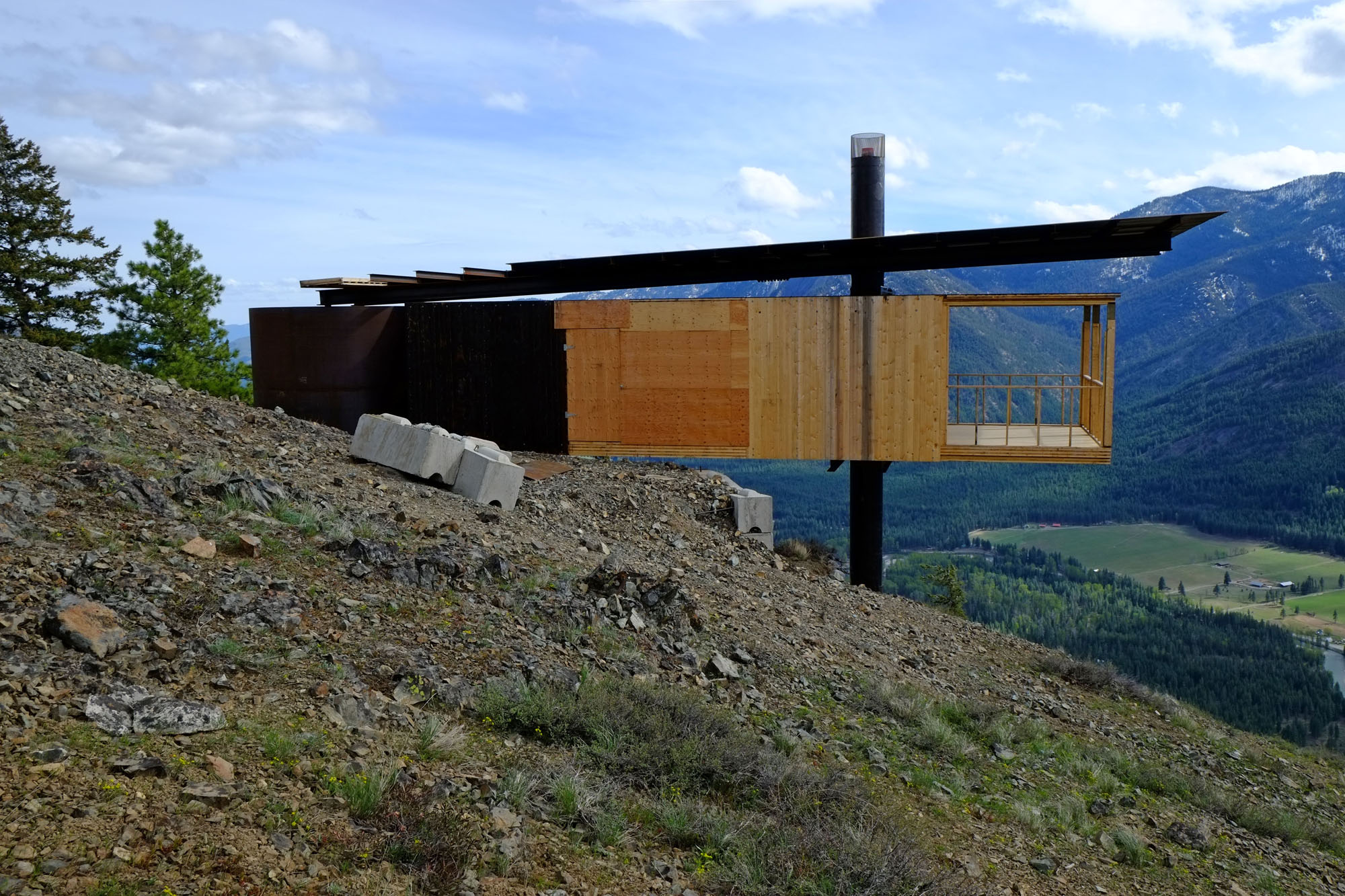Tom Kundig is one of the most celebrated architects in Seattle. The recipient of numerous national awards, the subject of books that lavishly depict his modernist and inventive houses, he is known for the way his structures “fit serenely into the landscape,” as The New York Times
put it last year. See for instance a Kundig-designed house, depicted in another Times
piece, that is nestled in a cropping of rocks in the San Juan Islands.
Yet, a small vacation cabin he is building in the Methow Valley for his family and two others is causing a local uproar precisely because of its interaction with the landscape. The boxy, metal-roofed structure sits atop a ridge on Flagg Mountain, which rises above Mazama. The cabin, or “hut” as it is often referred to, is positioned so far forward on the ridge that, with the help of a beam, it juts over the cliff.
“It’s hard to think of it as doing anything else but lording it over the landscape,” says Bill Pope, an owner of the Mazama Country Inn. He has helped organize a campaign, called Move The Hut, that has circulated a petition asking Kundig and co-owners of the cabin to “reconsider the location of the structure.” Roughly 500 people have signed it so far, according to Pope.
Meanwhile, property owners on Flagg Mountain, including a woman who sold the lot upon which Kundig is now building, are suing the architect and the others involved with the project, who include high-end Seattle builder Jim Dow. The plaintiffs claim that Kundig and his partners are violating property covenants that call for any building to be erected with “special sensitivity” that minimizes its “visual impact” to those within its sight-line.
Pope maintains that the cabin can definitely be seen from the valley below. He says he looked up one day in October, and there it was. Apart from any covenants it violates, Pope says the structure runs contrary to an “ethical” code in the valley that says “you don’t build on a ridgeline.” Despite a flurry of building by wealthy Seatttlies who have picked the stunning spot in the eastern Cascades for a vacation home, that code has up until now not been transgressed, he says.
Kundig has built before in the Methow Valley, designing among other projects a group of rental “rolling huts” that are advertised as a “modern alternative to camping.” None of those projects have sparked controversy.
Reached by phone, Kundig says he’s done nothing wrong with his newest project. He declines to talk in detail given the ongoing legal proceedings other than to say that the cabin will live “light on the land.” He elaborates: “It’s an 800-square-foot hut that’s off the grid. It harvests the sun. It harvests water.”
Dow concedes that the cabin can be seen from the valley. But he contends that the photos publicized by Move the Hut, like the one above, use a telephoto lens that make the structure seem bigger than it is. “We’ve had people call us and say: ‘We can’t find it. Where is it?’”
In placing the hut, Dow says, “we had a number of constraints. One of the most crucial was that there are three pieces of property on the ridge, and the other two property owners up there were very concerned they not see our cabin.” That could only happen if the cabin was built where it is, according to Dow.
“So we tried to do some things to minimize [the impact],” he continues, adding that making the cabin small was one of them.
He also contends that other people have built on ridgelines above the valley as well, although towards touristy Winthrop rather than in sleepy Mazama.
Attorneys for Dow, Kundig and fellow defendant Ben Rand moved to have the lawsuit dismissed on the grounds that the plaintiffs don’t have standing. While striking two of the plaintiffs, an Okanogan County Superior Court judge ruled late last month that the suit can proceed.








